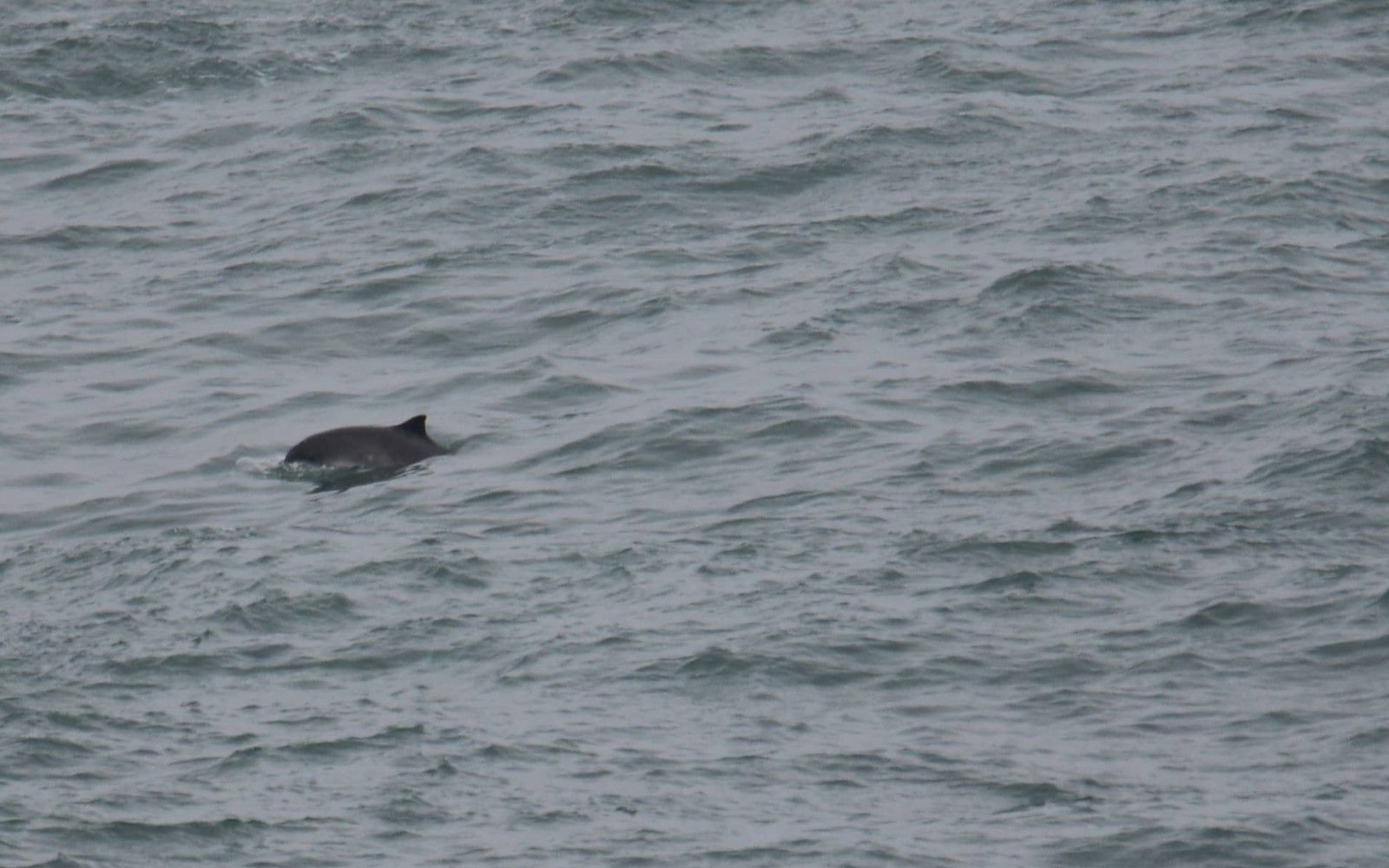Protecting porpoises in coastal Pembrokeshire

Despite being the most common small cetacean in UK waters and being listed as Least Concern by the IUCN, harbour porpoises are thought to have experienced a decline in numbers over the last fifty years.
Human impact on harbour porpoises
Harbour porpoises are the smallest and most common cetacean spotted in British and Irish waters. Their backs are dark grey, with small, triangular dorsal fins, and they usually live in groups of up to ten individuals. Unlike many dolphin species, harbour porpoises rarely leap out of the water or bow-ride (when they ride the bow pressure waves of boats), although they sometimes approach slower boats. While they typically keep a low profile in the water, their small size and characteristic rolling swimming style make them easy to recognise.
Harbour porpoises are listed as Least Concern by the IUCN and are thought to have experienced a decline in numbers over the last fifty years. The main threats they face are entanglement in fishing nests, chemical and noise pollution, boat traffic and a lack of food. The most significant threat in UK waters is incidental catches in fishing gear, primarily gill nets.
Understanding environmental factors
The North Pembrokeshire coastline is home to a significant number of harbour porpoises. Sea Trust is at the forefront of efforts to protect and study this population through their Harbour Porpoise ID project. This involves long-term monitoring of the species and its habitat through photographing and identifying each porpoise by their uniquely-shaped dorsal fin.
Building on Sea Trust’s important work, our new intern, Aneesha Butcher, is investigating feeding behaviour to understand the impact of environmental factors on harbour porpoises. She is visiting the Sea Trust’s monitoring sites to examine whether tidal patterns influence how often porpoises feed at these particular sites. Her findings will help identify which tidal times are critical for feeding porpoises and the information can be used by Sea Trust to implement local marine policies, provide guidelines for local communities and support further research about how and where porpoises feed.
We’re confident that Aneesha’s work will contribute valuable insights to help better protect harbour porpoises and their marine home in North Pembrokeshire.
Header image credit Sea Trust

